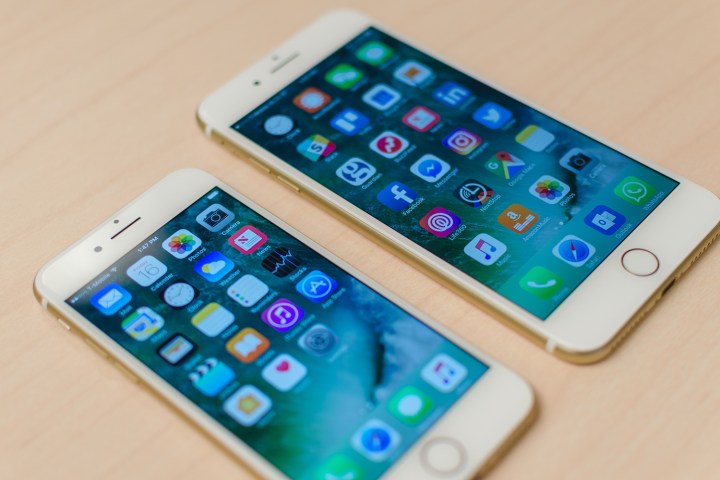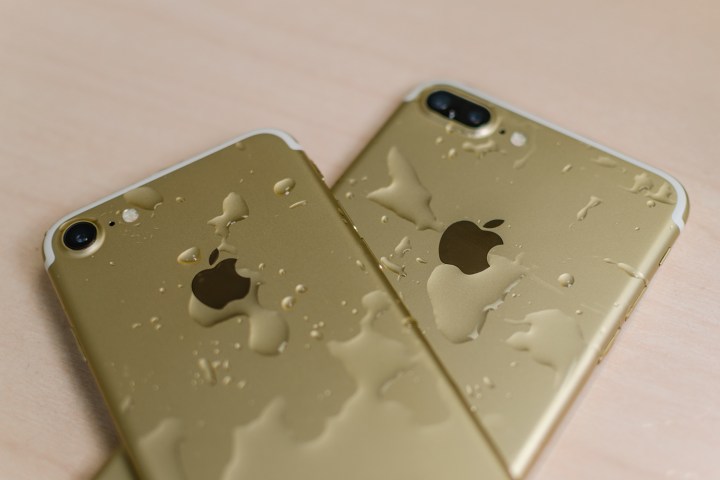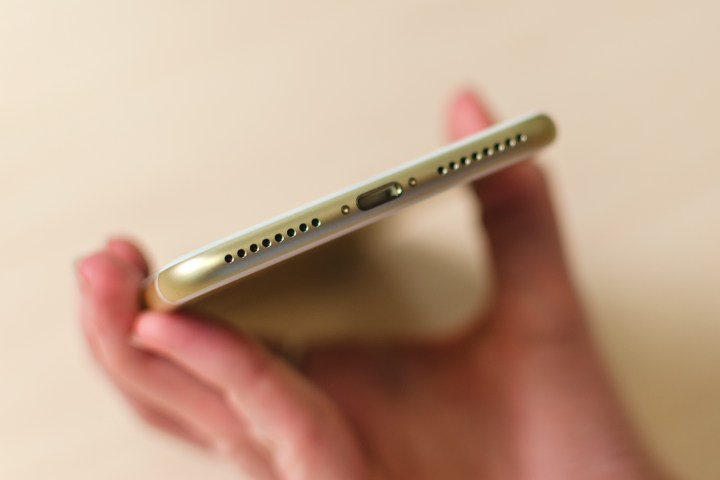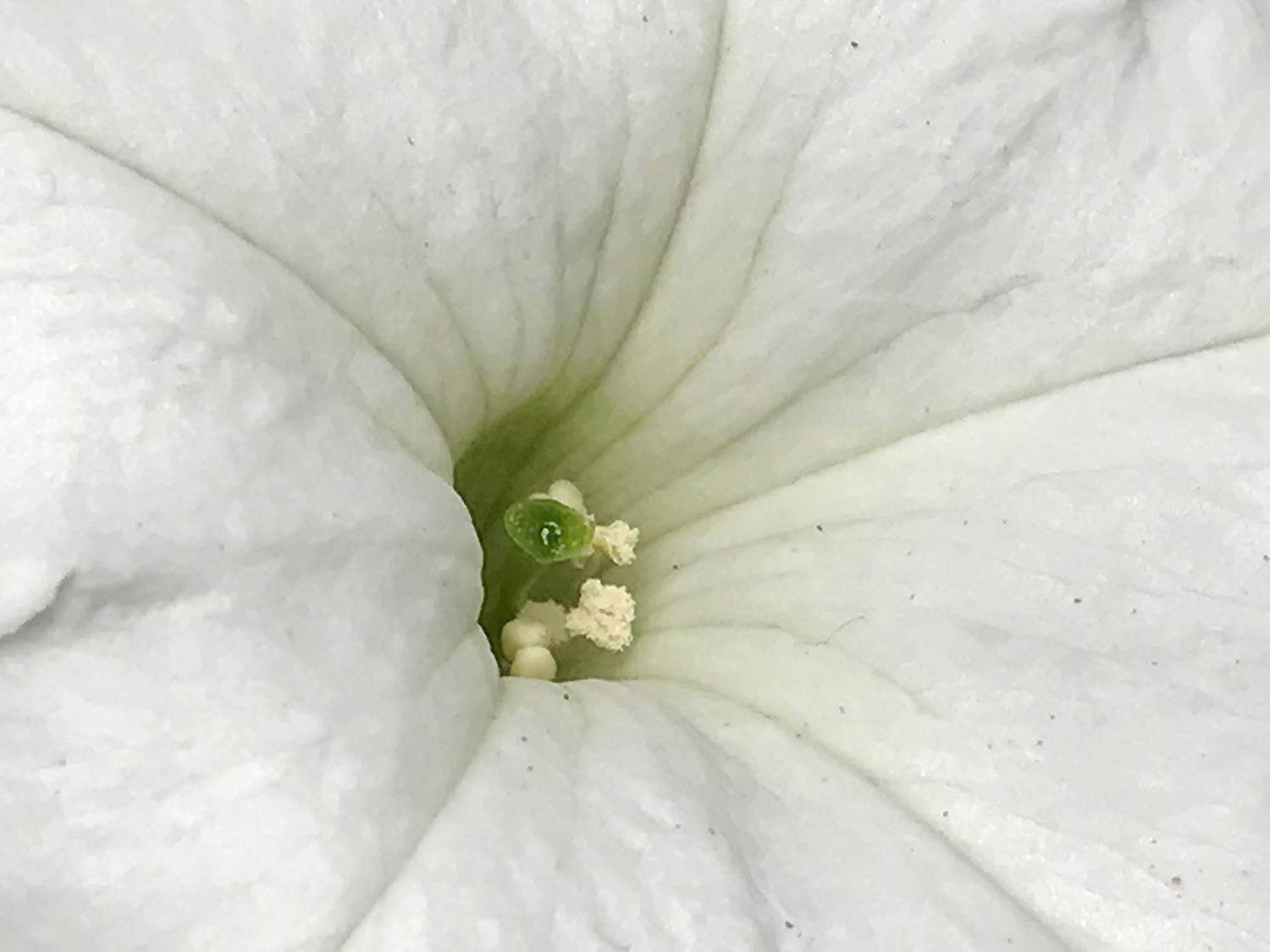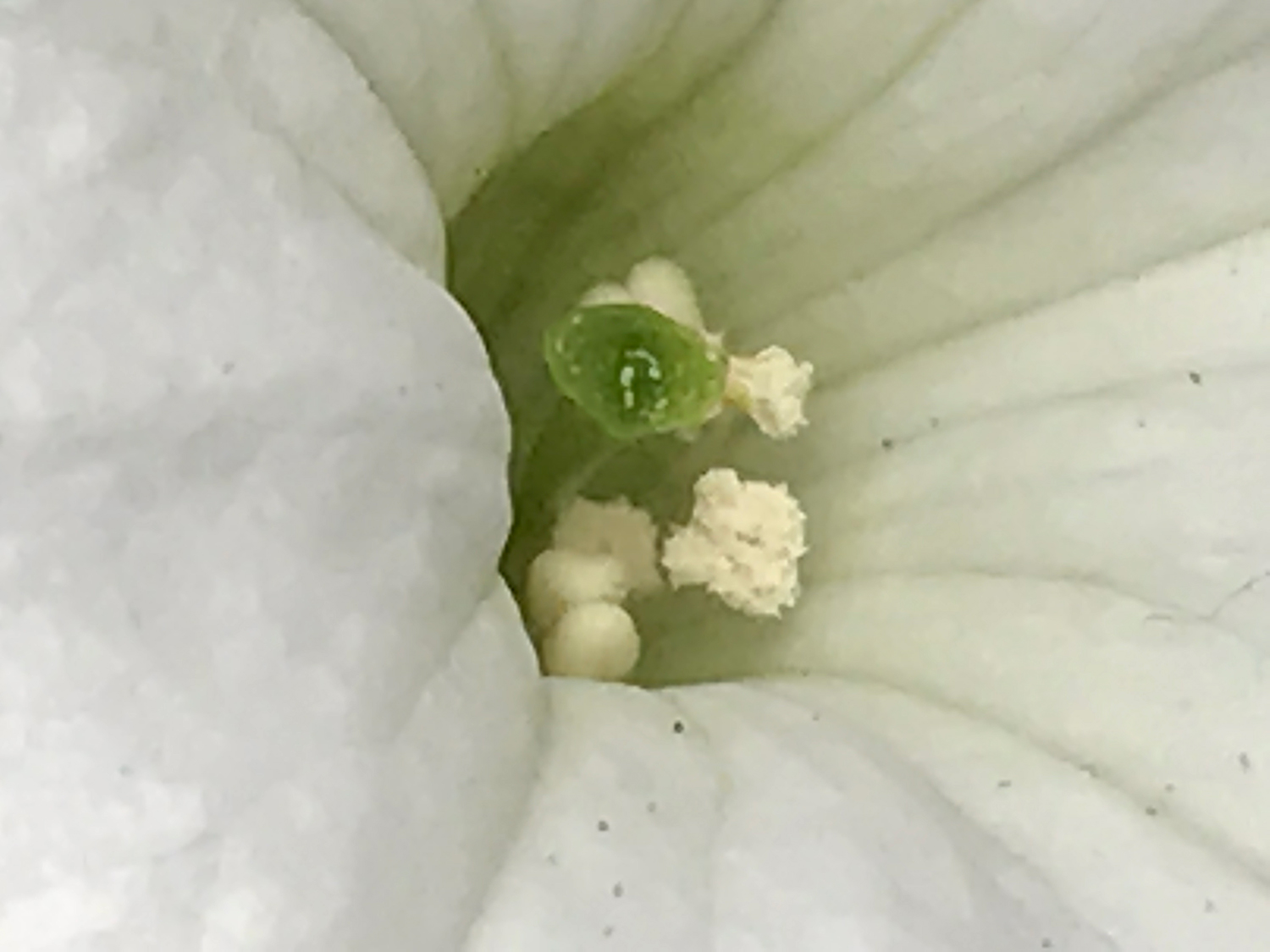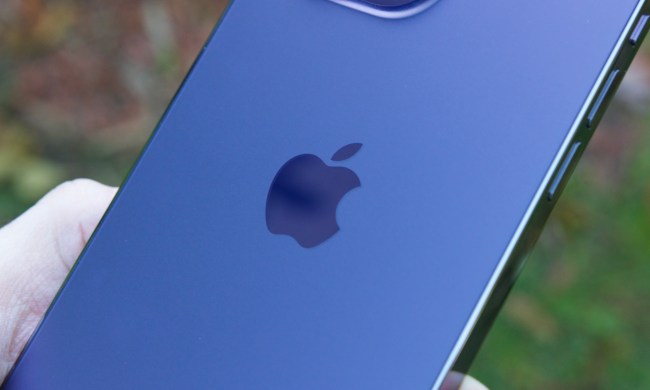Go big or go home: Apple’s iPhone 7 Plus, with its amazing dual cameras, is the one to buy.
At long last, the iPhone 7 and the iPhone 7 Plus are here, and yes, everything you’ve heard is true. There’s no headphone jack, you can dunk the new iPhones in water, and the camera on the iPhone 7 Plus can perform all sorts of magic tricks. Otherwise, the changes are quite subtle, so the phone should feel familiar to longtime users.
We’ve been using the iPhone 7 and iPhone 7 Plus since they came out in September. We gave both the iPhone 7 and the iPhone 7 Plus stellar reviews, which you can read in full below. Here’s everything you need to know, including specs, features, pricing, and availability.
Small design changes on a waterproof body
The iPhone 7 and the 7 Plus don’t look all that different from last year’s iPhone 6S and 6S Plus — you’ll have to wait for next year’s iPhone 7S/8 for major changes, and of course, rumors are already plentiful.
The biggest cosmetic difference (besides the removal of the headphone jack — hello, elephant in the room!) is that both the iPhone 7 and 7 Plus are (finally!) water- and dust-resistant, with an IP67 rating. That means you’ll be able to take either of them under up to 1 meter of water for about 30 minutes. The water-resistance level isn’t as high on the iPhone 7 and 7 Plus as it is on the Galaxy S7 and most other water-resistant phones, all of which support IP68 water and dust resistance. The difference is that you can submerge the Galaxy S7 in 5 meters of water versus 1 meter with the iPhone 7. Unless you literally swim with your phones, it’s really not a huge deal, but it’s a shame that Apple’s water-resistance rating is lower.
We dunked both new iPhones in a beer stein full of water to see if they’d pass the test, and they did — with flying colors. Both phones were fully operational after several submersion tests. We even played music on the iPhone 7 Plus while it was underwater in the glass, and it pumped out sound like normal. If anything, the speakers sounded better with the amplification of the glass and water.
Speaking of speakers, the iPhone 7 and 7 Plus now have two speaker grills on the bottom edge of the phone because the 3.5mm headphone jack is gone. That’s right, folks. You only have the lightning port now for headphones, or you have to go wireless or use the provided adapter, which comes in the box — more on that later.
Apparently, the headphone jack took up a ton of space, and now that it’s gone, Apple added a taptic engine in its place, which provides haptic feedback when you press the Home button. The haptic feedback is key because now the home button isn’t a physical button — it’s a flat, solid surface. You “press” it to unlock your phone, double-press it to trigger Apple Pay when the screen is off, and double-press it when the screen is on to trigger multitasking mode. When you press it, it provides the same haptic feedback you feel when you use 3D Touch on an app icon. You feel a small vibration, and that’s it. Some people will miss the physical button, but we don’t miss it at all.
The jet Black model is as fingerprint-prone as any glass-backed Galaxy S7, and that’s a real shame.
The iPhone 7 and 7 Plus have the same aluminum body and the only difference is the placement of the antenna lines. Now, they curve around the corners instead of slashing across the back. The new iPhones even share the same respective screen sizes as last year’s iPhones: a 4.7-inch display on the 7, and a 5.5-inch screen for the 7 Plus. The Plus sports a resolution of 1,920 x 1,080 pixels, and its smaller brother packs 1,334 x 750 pixels. Both screens are 25 percent brighter than the 6S and display a wide color gamut.
But the differences btween the old and new models are still noticeable, and they’re particularly obvious on the new color options: Black and jet black. Jet black features a “pristine, mirror-like surface” and a high-gloss finish.
“The high-gloss finish of the jet black iPhone 7 is achieved through a precision nine-step anodization and polishing process,” according to Apple. “Its surface is equally as hard as other anodized Apple products; however, its high shine may show fine micro-abrasions with use. If you are concerned about this, we suggest you use one of the many cases available to protect your iPhone.”
Yes, Apple just recommended you get a case for the jet black iPhone 7 because it’s prone to scratches. It also picks up fingerprints like nobody’s business. The jet black model is as fingerprint-prone as any glass-backed Galaxy S7, and that’s a real shame. It looks so pretty until you touch it, and then it’s covered in oily smears. Personally, I hate fingerprint-covered phones and I much prefer the matte Black finish. Apple still offers silver, gold, and rose gold for traditionalists who don’t want the new black models.
The camera on the rear still sticks out, but the most noticeable difference is on the iPhone 7 Plus. It features dual-cameras on the rear, similar to smartphones like the LG G5. It’s the first iPhone to ever have such a feature, which is easily identifiable on the back of the device. We’ll go into more detail on the cameras later in this article.
No headphone jack
Both new iPhones also utilize stereo speakers — both at the top and bottom of the devices — and Apple says they feature “increased dynamic range.” However, those speakers are exactly where the headphone jack used to be.
The iPhone 7 and 7 Plus no longer feature a 3.5mm headphone jack. That means you’ll have to rely on a Lightning converter for your current headphones, or upgrade to a pair of Bluetooth earbuds. To make up for the missing headphone jack, Apple is including a pair of Lightning-connected (wired) EarPods in the box and a Lightning-converter for your 3.5mm headphone plug. The big downside: you cannot charge your phone and listen to music at the same time.
Our take: If the iPhone’s headphone jack dies, Apple wins and you lose
So just how bad is life without a headphone jack? The answer is, it depends. If you, like many iPhone users I know, only use the earbuds Apple always includes in the box with your iPhone, then you probably won’t care. Apple gives you a pair of earbuds just like last year’s, but they connect to your phone with lightning instead of a 3.5mm headphone jack. The only time you will care is when you want to charge your phone and listen to music simultaneously because now you can’t do that without a gross-looking dongle. If you already use wireless headphones, you won’t even notice the headphone jack is gone.
However, if you have a beloved pair of wired headphones, prepare to be seriously pissed off and thoroughly put off by the iPhone 7 and 7 Plus. Sure, you can use the included 3.5mm to lightning headphone adapter, but dongles aren’t exactly preferable. It’s small, so you could easily lose it, and the wire connection between the 3.5mm port and the lightning connector feels flimsy. Much like the included iPhone charging cords, which always break, we suspect this adapter may not have the longest life. We shall see.
It certainly is nice that Apple included the adapter, it’s just a shame that it’s so flimsy.
The lack of a headphone jack also prompted Apple to improve wireless audio — the result is the W1 wireless chip. It’s implemented in another new Apple product, the AirPods, which are completely wireless and get 5 hours of battery life. They aren’t included in the box, and you can read more about the $160 wireless earbuds here. You can also use any normal wireless headphones with the iPhone 7 and 7 Plus. You can check out our favorites here.
Although there aren’t many lightning connected headphones out yet, we expect many more will come in the following months. We’ve already reviewed a pair from Audeze, which sound great.
More processing power
Apart from the new high-gloss finish and water-resistant rating, there are several other major changes under the hood of the iPhone 7.
The iPhone 7 and 7 Plus utilize Apple’s most powerful processor ever — the A10 Fusion. It’s a 64-bit quad-core processor that’s 40 percent faster than the A9 in the iPhone 6S and 6S Plus. Apple says it’s 120 times faster than the original iPhone. Although that’s hard to prove in a short test, we did notice that iOS 10 runs a bit smoother on the iPhone 7 and 7 Plus than it does on the iPhone 6S and 6S Plus.
The first two cores are for high-performance actions, and the remaining two are high-efficiency ones. Apple has designed a performance controller to determine which actions make use of either set of cores. For example, checking your email will most likely be powered by the high-efficiency cores, which is better for saving battery life.
The processor also improves the iPhone 7 and 7 Plus’ graphics — it’s 50 percent faster than the A9.
It’s hard to compare iPhones to Android phones when it comes to processing power because the iPhone doesn’t use the Qualcomm Snapdragon chips that most Android phones use. However, here are some benchmark results in Geekbench 4:
- iPhone 7 Plus: 3,367 single core/5,491 multi-core
- Samsung Galaxy S7: 1,869 single core/5,366 multi-core
- LG G5: 1,672 single core/3,401 multi-core
- Huawei P9: 1,823 single core/5,152 multi-core
The battery is also the best ever compared to previous iPhones. The Cupertino, California, company says the new iPhone 7 will last 2 hours more than the iPhone 6S, and the iPhone 7 Plus will add an additional hour over the iPhone 6S Plus. The battery does seem to last a couple hours longer on both iPhones. The iPhone 7 Plus can easily do a day and a half.
Dual cameras are impressive on the iPhone 7 Plus
The iPhone 7 has a spectacular camera, but it doesn’t have anything on the iPhone 7 Plus’ dual-camera setup. You’ll have to shell a little more money for the iPhone 7 Plus, but boy is that camera tech worth it.
Let’s start with the normal iPhone 7, seeing as it’s one part of the system on the 7 Plus. The 12-megapixel camera officially features optical image stabilization, a 28mm wide-angle lens with a f/1.8 aperture, and a high-speed sensor that’s 60 percent faster than before. It’s also 30 percent more energy efficient. It takes great photos from what we’ve seen so far, so your shots will be slightly better on the iPhone 7 than they were on the iPhone 6S. Optical Image Stabilization (OIS) also helps.
Apple’s new image signal processor in the iPhone 7 offers twice the throughput of Apple’s previous ISP, and even the True Tone flash has gotten an upgrade — it has four LEDs that offer 50 percent more light. A new flicker sensor also adds artificial light, for brighter images in low-light scenarios.
The camera can detect faces and bodies and offers wide color capture. There’s so much more going on when you take a shot, such as white balance, noise reduction, and combining multiple images. Apple says there are 100 billion operations every time you take a picture, all in the span of 25 milliseconds. This is marketing lingo, but what the phone is able to do in a fraction of a second is impressive.
Professional photographers will be happy to know that the iPhone 7 finally supports RAW image format in Lightroom, allowing for more control when editing photographs.
On the front of the phones, the selfie camera on the 7 and the 7 Plus has jumped to 7 megapixels, and also features wide color captures and automatic image stabilization. Selfies certainly do look sharper, and that’s a good thing. Selfies are quickly taking over social media, so it’s essential to have a strong front camera. Apple’s 7-megapixels shooter is even more high resolution than the one on the Samsung Galaxy S7 and many other Android competitors.
The iPhone 7 Plus has a better rear camera, though. It uses the same camera as the iPhone 7, but there’s another 12-megapixel camera next to it. This one’s a 56mm-telephoto lens with an f/2.8 aperture. What’s special is a built-in zoom feature.
When you take a picture, a 1x icon will pop up in the camera. You’ll be able to tap it to bring it up to 2x and drag this slider from 1x to 10x — that lets you zoom in for spectacularly-detailed images and a better crop. The camera uses a 2x optical zoom, but it switches to digital zoom when you move closer to 10x. The physical 2x zoom looks great and produces sharp close-ups that far surpass what you’d get on the standard iPhone 7 or iPhone 6S.
However, once you get to the digital zoom, things start to get less crisp. Digital zoom is good up to 5x. A tripod may help, and we still have to test it in various lighting conditions, but so far, the zoom on the iPhone 7 Plus is impressive. It’s better than we’ve seen on any other smartphone to date. You just shouldn’t push it beyond 5x.
Additionally, there’s a new bokeh effect that’s currently being worked on by Apple’s camera engineers. It adds a blur effect to the backdrop of images to offer a depth effect that’s on par with DSLR cameras. You can turn this feature on or off, and you can also see a live preview of it before you take a shot. This feature will come via a software update. Even now, you can see slight selective blurring in the background when you focus on a close-up subject. You can also try it out in the beta of iOS 10.1.
Availability and price
The iPhone 7 and 7 Plus are available in stores and online, though you might have some trouble snagging certain models. The jet black variant of the iPhone 7 and 7 Plus is facing a global shortage, thanks to the devices not hitting Apple’s quality standards.
About 30 to 40 percent of the manufactured glossy models need to be retooled, causing delays that now have the models shipping in November. Pre-orders for other colors are shipping faster than expected, according to MacRumors.
On October 14, iStockNow suggested that there are a few jet black models available in the U.S. If you’re in Chicago, Houston, Los Angeles, Miami, New York, Philadelphia, Phoenix, San Diego, and San Francisco, you may just be in luck, but you ought to either make an online reservation, or call your local store ahead of time to see if the phone of your dreams is still around.
And iOS 10 is also available to download if you have not updated your device yet.
If you have an iPhone 6 or older, you’ll want to consider grabbing an iPhone 7 or iPhone 7 Plus. However, there is not much of an improvement jumping to the regular iPhone 7. We recommend upgrading to the iPhone 7 Plus, though. The dual-camera system is worth it.
The iPhone 7 starts at $650 and for the first time, there is no longer a 16GB storage option. We are so glad Apple said goodbye to the 16GB model. It’s completely insane to offer a phone with so little storage in this day and age. Instead, you can choose from 32GB, 128GB, and 256GB. The jet black color only has a 128GB and 256GB internal storage option. The iPhone 7 Plus starts at $770 and also has the same storage options.
You can also now order the sim-free version of both the iPhone 7 andiPhone 7 Plus. That means you’ll have to set up a contract with a carrier yourself, but you do have the freedom to choose the plan and company you want. Apple is offering buyers of the sim-free version an 18-month payment plan, or they can pay the full price (starting at $769) upfront.
You can read more about all your upgrade options, deals from all four major carriers, and the iPhone Upgrade program here.
Apple is also upgrading the storage options for the iPhone SE, the iPhone 6S and 6S Plus — there’s no longer a 16GB variant. Several iPads are also getting the same treatment.
Highs
- Dual cameras and zoom on the iPhone 7 Plus is impressive
- Sleek aluminum design is now waterproof
- Top performance from the A10 Fusion chip
- Storage starts at 32GB and ranges to 256GB
- iOS 10 runs like a dream
Lows
- No headphone jack
- No dual cameras on the iPhone 7
- Some major phones come with 64GB
- Expensive
Article originally published on 09-28-2015. Julian Chokkattu, Kyle Wiggers, Andy Boxall, and Christian de Looper contributed to this report. Updated 10-14-2016 by Lulu Chang: Added news of jet black and sim-free iPhone availability.
